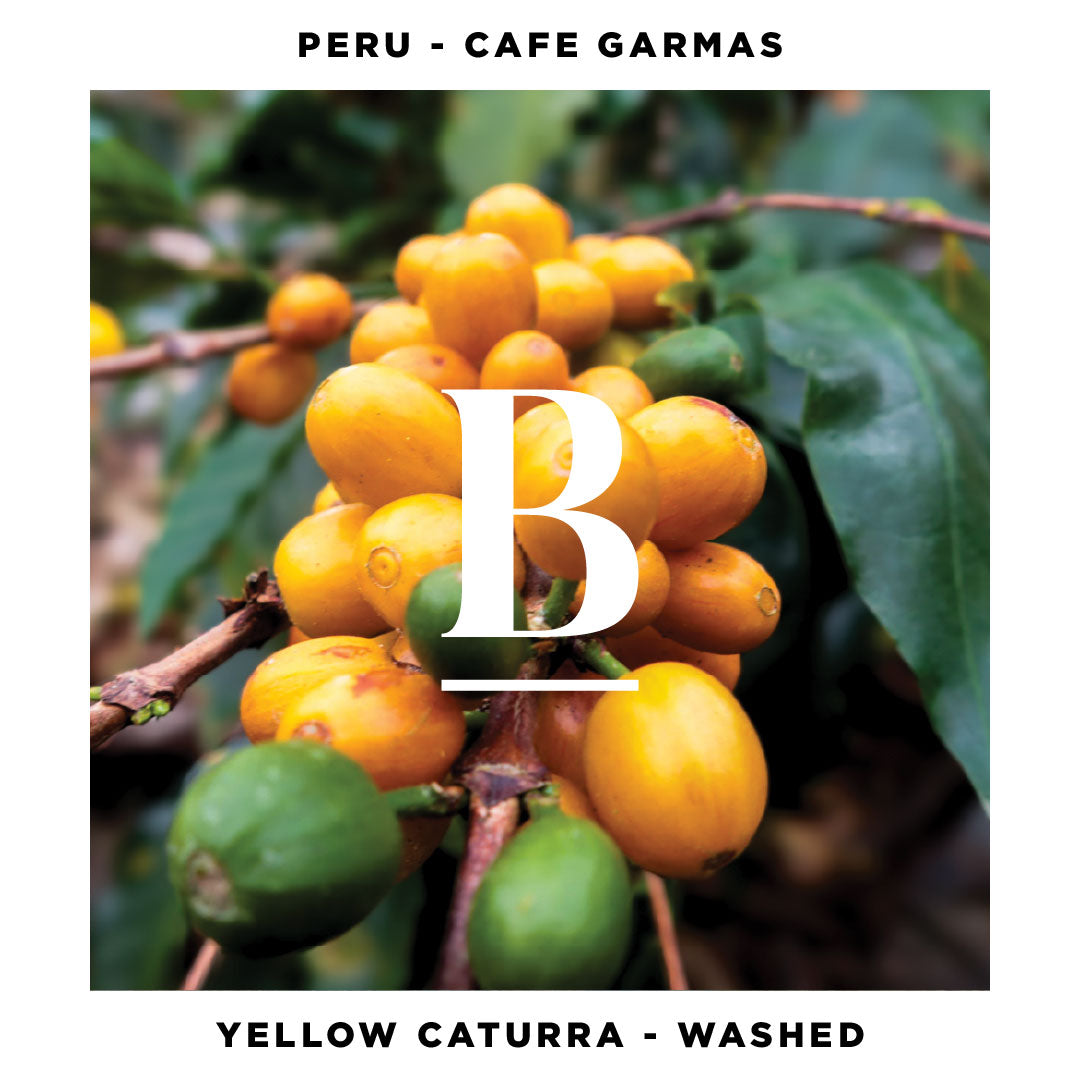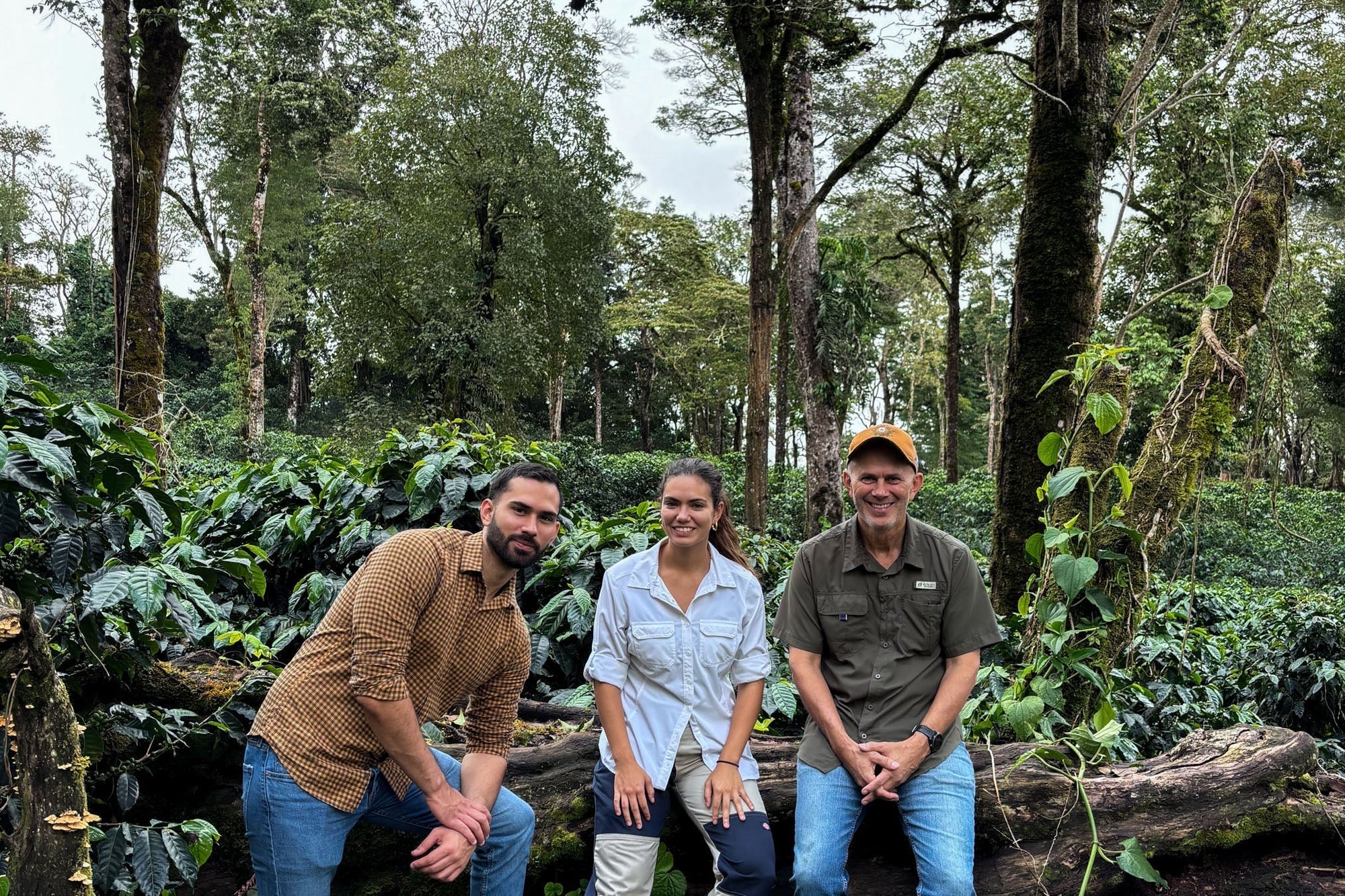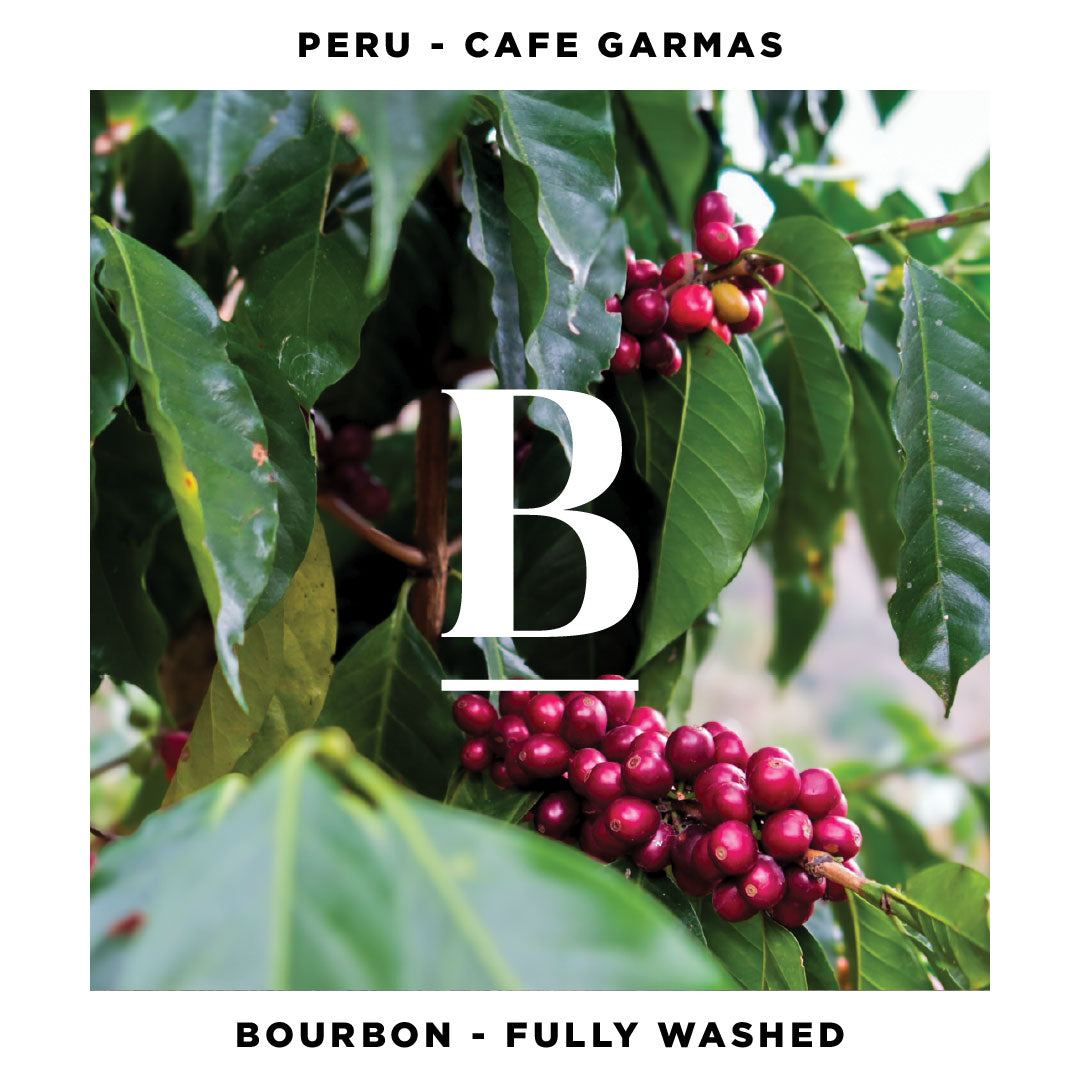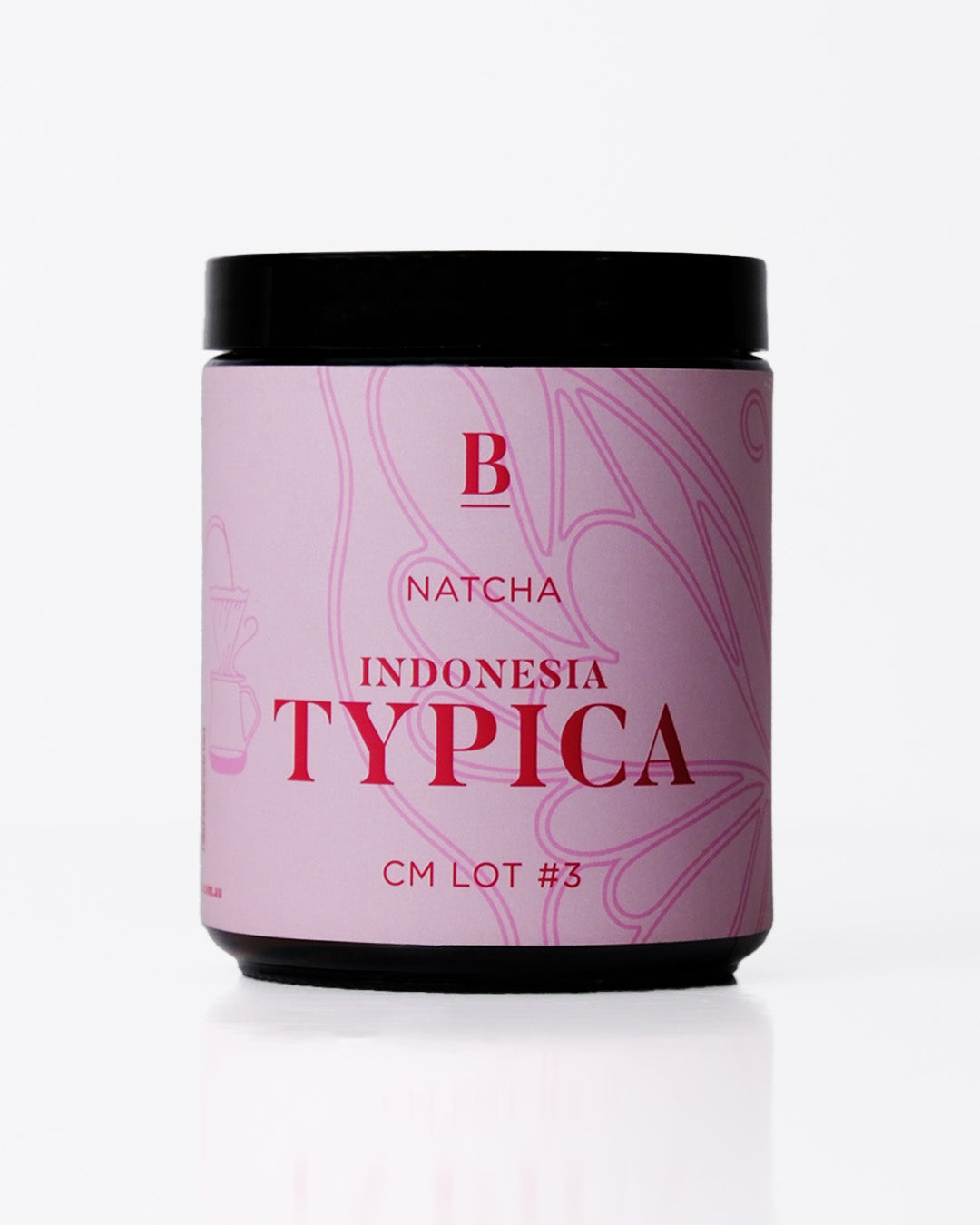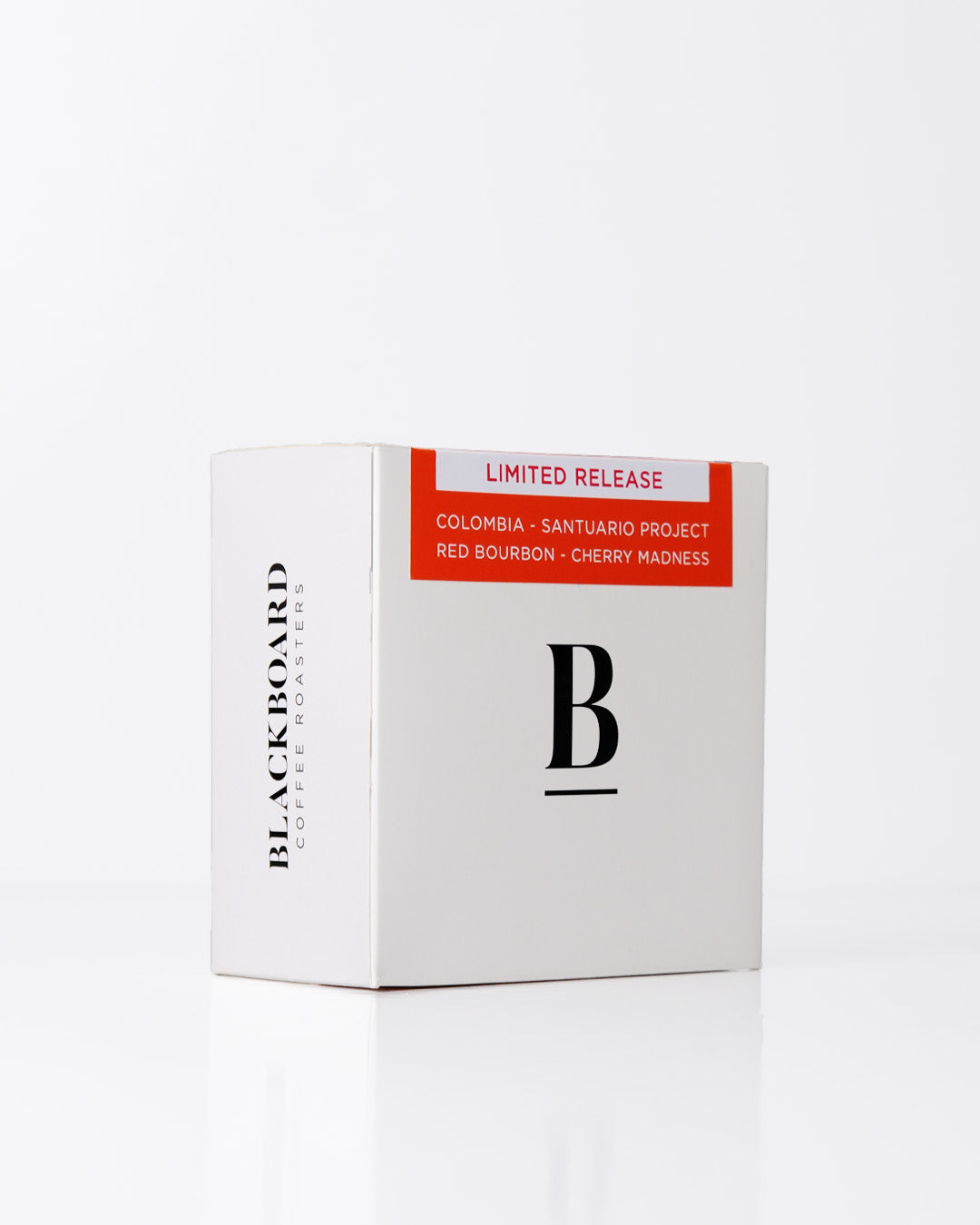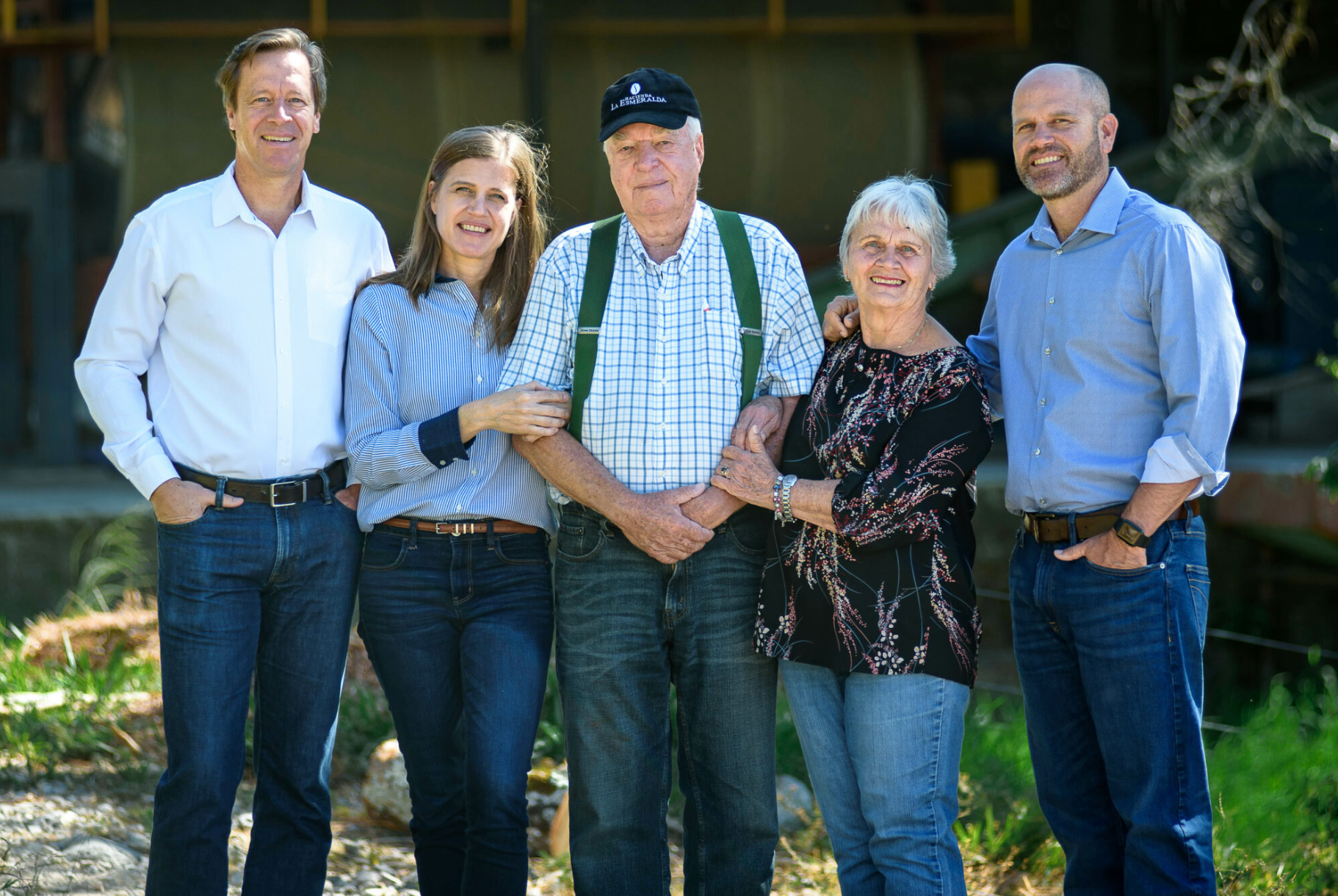
Introduction
Our latest Roaster's Pick filter we're excited about is Peru Cafe Garmas | Yellow Caturra Washed, a coffee that captures the spirit of partnership and Peru’s untapped specialty potential. Grown by husband-and-wife team Maximiliano García and Esperanza Armijos in the remote highlands of Cajamarca, this fully washed Yellow Caturra offers vibrant citrus, floral elegance, and a caramelized sweetness. From their 3.5-hectare farm near the Ecuadorian border to your cup, it’s a story of collaboration, resilience, and the quiet rise of Peruvian coffee.
| Farm | Cafe Garmas |
|---|---|
| Process | Fully Washed |
| Variety | Yellow Caturra |
| Elevation |
1,755 MASL |
| Region |
El Huabo, Cajamarca |
| Country | Peru |

How’s It Taste?
Bright and nuanced, this coffee bursts with juicy mandarin and bergamot, layered with honeysuckle florals. A caramel sweetness emerges mid-palate, balanced by a crisp, lemonade-like acidity. The finish is clean and lingering, with a subtle hint of raw honey. The washed process accentuates clarity, letting the Yellow Caturra’s inherent vibrancy shine.

How To Brew?

Recipe
|
Weight |
Yield |
Temperature |
Extraction Time |
Ratio |
|
20g |
320g |
97℃ |
2:45 Min |
1 : 16 |
To fully experience the depth and complexity of this coffee, we recommend trying it with these brewing methods:
- Pour Over (V60, Chemex)
- Aeropress
- Moccamaster
- Cold Brew
Each method highlights the unique characteristics of this roast, ensuring a memorable cup each and every time.
For more brewing tips, visit our Brewing Guide.
Who’s Behind This Coffee?
Maximiliano García and Esperanza Armijos spent 15 years working with Peru’s renowned Cenfrocafe cooperative before launching Café Garmas in 2018. Their farm’s name blends their surnames (García + Armijos), symbolizing their equal partnership in every step, from pruning to processing.
In Peru’s male-dominated coffee sector, their collaboration is rare and intentional. Esperanza oversees quality control and fermentation, while Maximiliano manages cultivation. Together, they’ve transformed a rugged plot into a specialty standout, growing Geisha, Bourbon, and this Yellow Caturra lot, all scoring 86+.

The Process
Every step at Café Garmas is a blends tradition and precision. After handpicking only fully ripe cherries, processing begins the same day to preserve freshness.
-
Pulping & Fermentation: Cherries are pulped using a small manual machine, a common setup for Peru’s remote farms. The mucilage-coated beans then ferment in lime-washed tanks, a technique Esperanza mastered during her years with Cenfrocafe. The lime (calcium hydroxide) stabilises the tanks’ pH, preventing over-fermentation in Cajamarca’s warmer climate. Beans soak for 18–24 hours, with Esperanza monitoring temperature hourly to balance acidity and sweetness.
-
Washing & Grading: Post-fermentation, beans are rinsed with spring water sourced from nearby Andean streams. They’re graded in concrete channels, removing floaters and defects by hand, a step Maximiliano insists on, despite the extra labour.
-
Drying: Beans spread in paper-thin layers on tarps under the intense Andean sun. The couple rakes them every 30 minutes for 10–12 days, a rhythm that prevents clumping and ensures even drying. At 1,755 MASL, the thin mountain air and arid heat accelerate evaporation, but nights are cool enough to slow the process gently, locking in floral complexity.
-
Resting & Milling: Dried parchment rests in cotton sacks for 3 weeks in a shaded storeroom, stabilising moisture before milling. The final step happens at a Cenfrocafe facility, where beans are hulled and sorted using gravity tables technology rare in Peru’s remote regions, but accessible through cooperative partnerships.
The lime-washed tanks and obsessive raking might seem laborious, but they’re why this Yellow Caturra avoids the grassy notes common in rushed Peruvian washed coffees. It’s a process built for patience, not shortcuts.


The Region
El Huabo, in Cajamarca’s San Ignacio province, sits just 40km from Ecuador. The farm’s isolation (a 6–8 hour drive from the nearest airport) means coffee dries in air so crisp and thin, it amplifies acidity and aroma. Hotter and drier than Peru’s famed Junín or Cusco regions, this microclimate stresses cherries gently, concentrating sugars.
Peru’s coffee history is steeped in resilience. After European colonisers abandoned farms post-WWII, the government redistributed land to locals, creating a nation of smallholders. Today, 70% of Peruvian coffee is grown on plots under 5 hectares, often processed at home. Yet remoteness forces many to rely on middlemen; only 15–25% join cooperatives like Cenfrocafe, which protect against exploitation.


Peru Cafe Garmas | Yellow Caturra Washed is a testament to what happens when skill meets opportunity. From a mountainside near Ecuador to your morning brew, it’s a reminder that great coffee thrives in partnership with the land, and with each other.
For those interested in establishing a wholesale coffee partnership, head to our wholesale page and fill out the contact form. If you're a venue looking to purchase casually or feature us as a guest roaster, visit Ordermentum to connect and view our price list.
